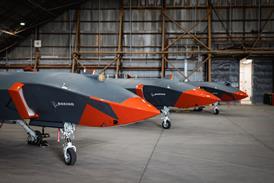Florida is going to be the key jumping-off point of many US airlines' Cuba strategy.
The sunshine state is by far home to the largest concentration of Cuban immigrants in the USA. In 2013, more than three-quarters of the roughly 1.1 million Cuban immigrants lived in Florida, Migration Policy Institute analysis of US Census Bureau data shows.
Airlines are well aware of this fact.
“Florida is where most Cuban Americans live and will have the most opportunity,” says David Harvey, senior director of network planning and performance at Southwest Airlines, at the Routes Americas forum in San Juan today.
The Dallas-based carrier’s Fort Lauderdale base is “right at the top” of its list of potential US gateways for any of the new 110 Cuba frequencies it may seek from the US Department of Transportation, he says.
“We are actively assessing how we want to approach Cuba,” says Harvey who will not commit to whether or not Southwest will seek any of the frequencies.
US and Cuban officials signed the new bilateral air services agreement on 16 February, the first such accord since the 1950s. There are 20 daily frequencies to Havana and 10 daily frequencies each to Camaguey, Cayo Coco, Cayo Largo, Cienfuegos, Holguin, Manzanillo, Santa Clara, Santiago de Cuba and Varadero available to US carriers under the deal.
“We plan to apply for multiple destinations in Cuba,” says Dave Clark, vice-president of network planning at JetBlue, at the forum.
The New York-based carrier plans to seek authority to serve multiple points in Cuba from Fort Lauderdale, where it operates a base, but will also seek authorities from other US gateways, including New York John F Kennedy International and Tampa International airports, he says.
“Cuba fits very well with our network,” says Clark, pointing to the large Cuban American populations in its focus cities, including Fort Lauderdale and New York.
JetBlue and Southwest are far from alone in gunning for the Florida-Cuba market. American Airlines has said that it will seek service to the country from Miami, arguably the centre of the Cuban community in the USA, and Fort Lauderdale-based Silver Airways sees a lot of opportunity to operate its fleet of 34-seat Saab 340Bs in the market.
“It’s natural for us to look at the Cuba market,” says Sami Teittinen, chief executive of Silver, at the forum. “We’ll see which markets we want to serve.”
The regional carrier will focus on serving markets in Cuba that may not be able to handle a daily flight on a Boeing 737 or Embraer 190, he says reiterating comments he made in December 2015.
Asked if Silver would seek frequencies to all nine of the cities outside Havana that are approved for new flights, Teittinen says that no final decision has been made but that most of those cities are “viable opportunities”.
Havana is likely to be “oversaturated” with new service, he adds.
Silver could fly to Cuba from its bases in Fort Lauderdale, Orlando and Tampa and also from other cities in Florida like Fort Myers and West Palm Beach, says Teittinen.
While competition between competitors JetBlue and Southwest is almost certain, things could get interesting if JetBlue and Silver win the same routes. The two have an extensive codeshare, which includes many of Silver’s flights in Florida and to the Bahamas.
Codesharing between Florida and Cuba could make a lot of sense for JetBlue and Silver. The former could focus on using its up to 162-seat Airbus A320s and 100-seat E190s to serve the largest markets, like Havana, from Florida as well as routes to other Cuban points from gateways further north, while feeding passengers over Fort Lauderdale to Silver’s flights to many of the smaller markets.
This could reduce the risk for both airlines in what remains an untested market.
Neither Clark nor Teittinen comment on the possibility of codesharing to Cuba, likely because they have yet to finalise what routes they will seek and are months away from knowing what routes they will be approved by the DOT.
Applications for the 110 available Cuba frequencies are due with the regulator on 2 March. The DOT anticipates scheduled air service to Cuba beginning by the third quarter.
Delta Air Lines and United Airlines, neither of which have hubs in Florida, also say they will seek some of the Cuba frequencies from their key gateways. These likely include Atlanta and New York for Delta and Houston and Newark for United.
“Everybody’s going to get a few, it’s just about how to use them best,” says Harvey.
Source: Cirium Dashboard











































